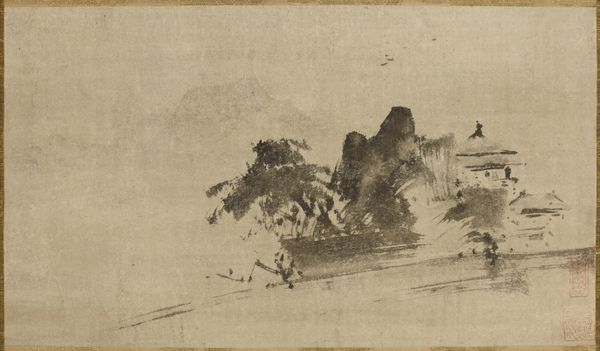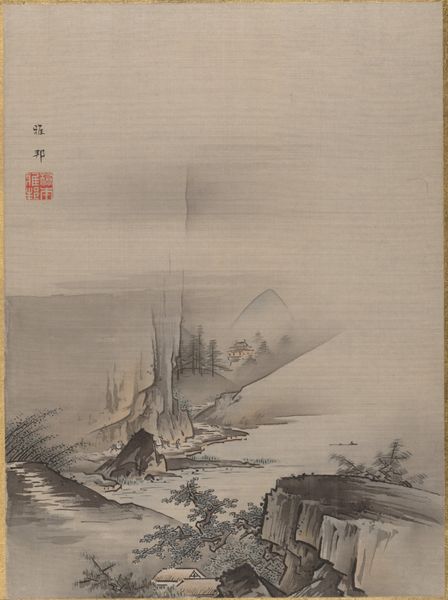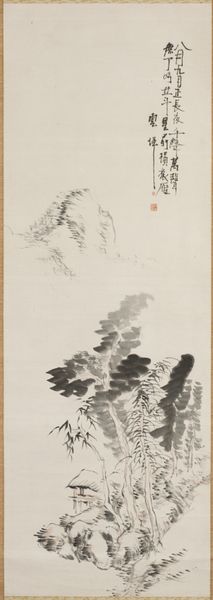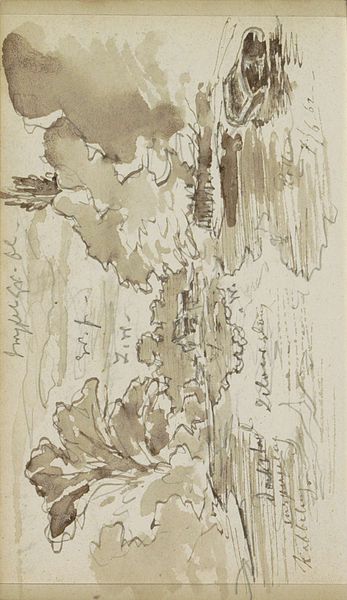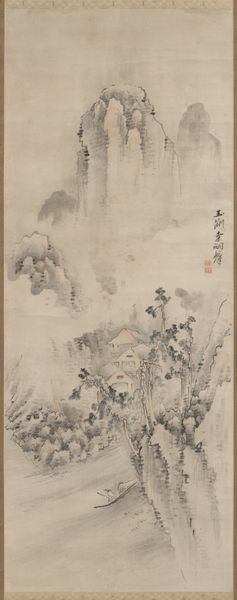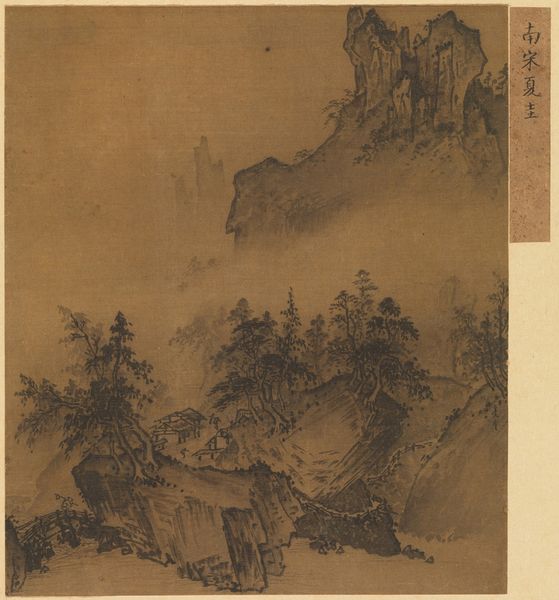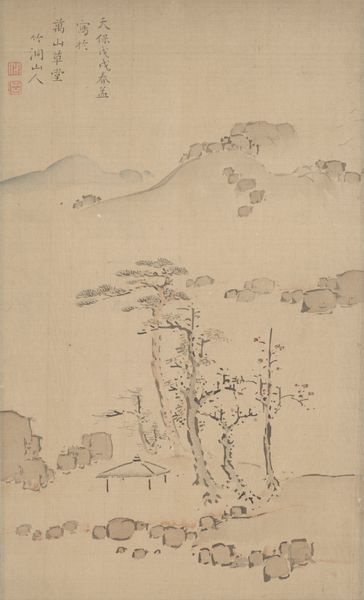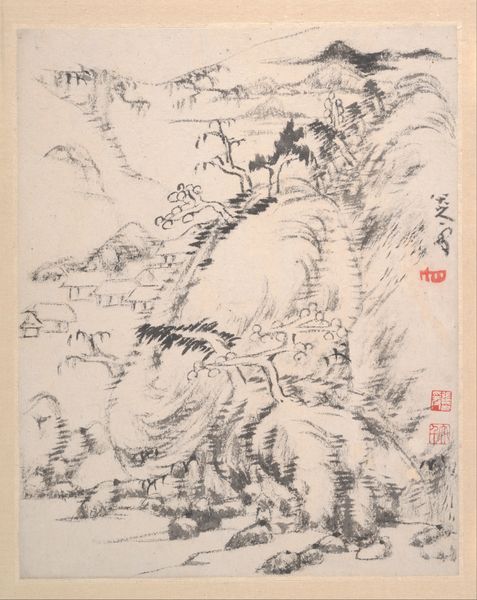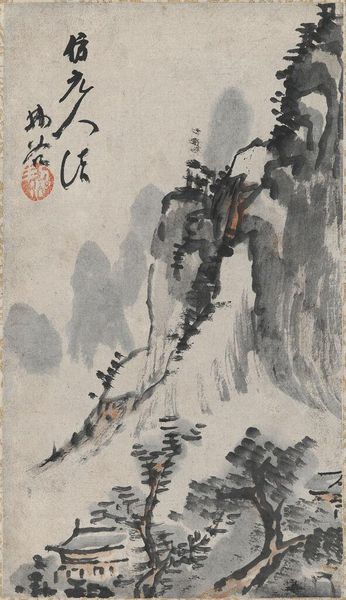
drawing, paper, hanging-scroll, ink
#
drawing
#
asian-art
#
landscape
#
paper
#
hanging-scroll
#
ink
#
calligraphy
Dimensions: 9 15/16 × 4 1/2 in. (25.24 × 11.43 cm) (image)32 1/4 × 9 7/16 in. (81.92 × 23.97 cm) (mount, without roller)
Copyright: Public Domain
Curator: This hanging scroll is entitled “Reading Books in the Waterside Pavilion,” attributed to Okada Hankō, dating back to the 19th century. It resides here at the Minneapolis Institute of Art. Editor: Stark. Almost austere. It feels like a quick sketch, very elemental, ink on paper of course, but economical to the extreme. Curator: Indeed. The sparseness contributes to its overall feeling of meditative quiet. The pavilion suggests cultivated leisure, enhanced by literacy and scholarship. Consider that within East Asian tradition, landscapes weren't simply pretty pictures, they were often coded with philosophical and spiritual meaning. Editor: Exactly, and how was this meaning conveyed? Here, cheap materials: ink readily available on humble paper support lofty aspirations, right? Mass literacy might change painting; making a virtue of necessary economy of brushstrokes. Curator: The very act of viewing becomes an exercise in contemplative interpretation. For example, water carries powerful symbolism; in many cultures, it's associated with purity, transformation, the subconscious. We can extend that to intellectual and emotional refreshment through study. Editor: The visible mark of the artist's hand is prominent. Every stroke conveys a material decision about pressure, direction, speed. To ignore the physical realities of the piece in front of us risks idealising both the production process, and the supposed spiritual or psychological value derived from it. Curator: I agree there is an unavoidable emphasis on the materials used, but I believe that these were ultimately selected to give expression to a sense of internal life. Editor: Possibly. But look closely at the building of tone and shade in the rocks at the base, the roof, the mountains – all this reveals the artist building layers, controlling tone to create texture with a restricted, though deeply impactful process. The real meaning to me emerges out of that. Curator: We are left considering our place within both the physical landscape and the larger cultural landscape. The beauty of this lies within that intersection. Editor: Yes, there is a conversation across both of those elements that you speak of so powerfully. Thank you for bringing it to our attention.
Comments
No comments
Be the first to comment and join the conversation on the ultimate creative platform.
